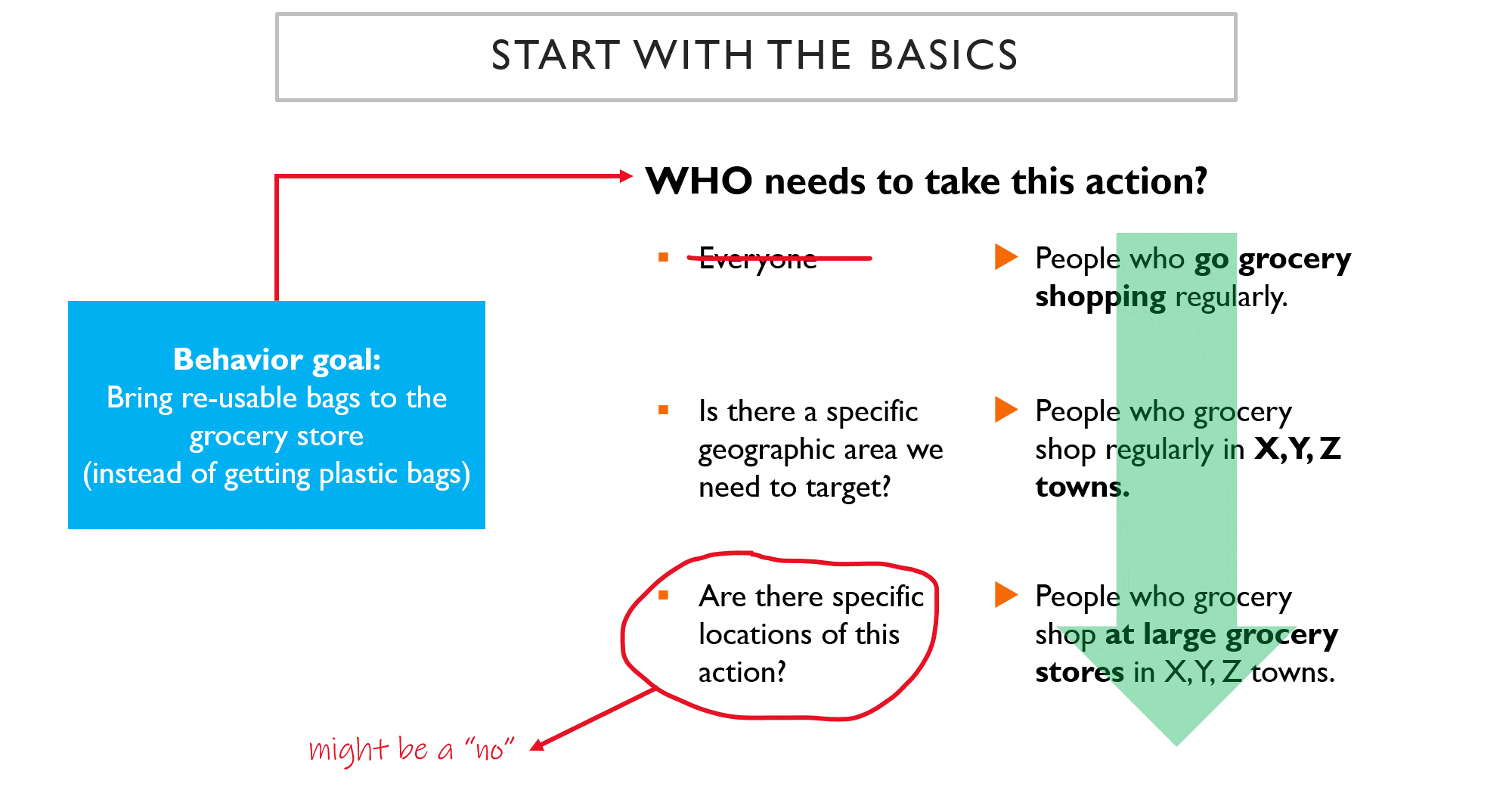
Your audience isn’t “everyone”
I know it feels like it is. Because:
We need everyone to reduce, reuse and recycle.
We need everyone to eat more plant-based meals.
We need everyone to hunt and fish and harvest more sustainably.
We need everyone to act right now.
While these all make excellent vision statements.
None of them are realistic target audiences.
Yes, to achieve global change, we need everyone to do all these things.
But does YOUR organization have the resources to reach all these people with the level of effort needed to create change?
Likely not.
And that’s okay.
It’s not about any one organization being a hero.
It’s about having a collective impact by each of us creating change where we can.
So let’s narrow the scope from “everyone” into an audience that’s a bit more manageable.
Starting with the basics
This example of re-usable grocery bags can serve as a template to follow:

Step 1
Start with identifying WHO needs to do the desired action or behavior.
Even if it sounds super obvious. Write it down.
Just like: people who go grocery shopping regularly.
Already you’re segmenting! It’s more important to target regular shoppers than individuals who rarely do the grocery shopping (and yes, they exist!)
Step 2
Next, determine if there is a specific geographic area you need to target.
This may be based on where the behavior occurs or – more likely – based on the scope of your organization and the project.
For example, you may only be responsible for, or allowed to, focus your effort in certain towns, districts, states or countries.
Step 3
Then, consider if there are specific locations of the action or behavior.
In this example, it was decided to focus on large grocery stores instead of smaller neighborhood stores. Mainly because the volume of plastic bags (and the related behavior) is greater at bigger stores.
And if there’s not a specific location for the action – then skip it! The point is to narrow your target audience a bit more than “everyone”.
This gives us a starting point to work with.
From there, you can begin to explore if you have priority and secondary segments by considering:
- Who is already doing the behavior?
- Who absolutely MUST do the behavior?
- Who is likely to do the behavior next (after those already doing it)?
Ready for the next level?
Then, take a look at the spheres of influence surrounding your audience and how they can play a role in your change effort.
Happy segmenting!


